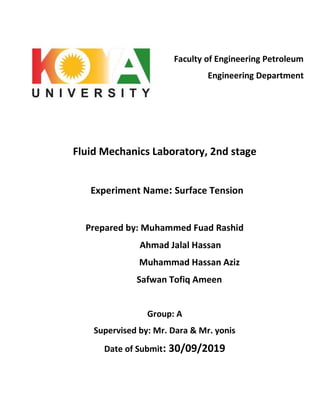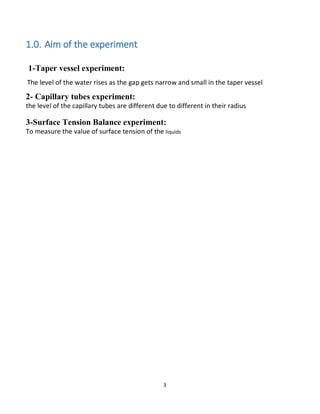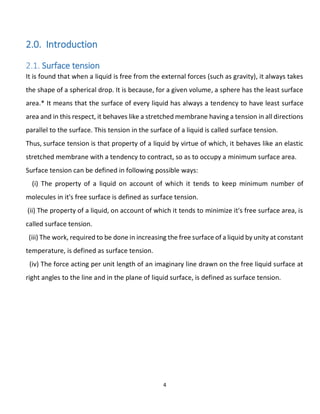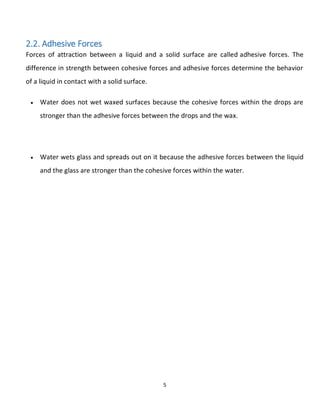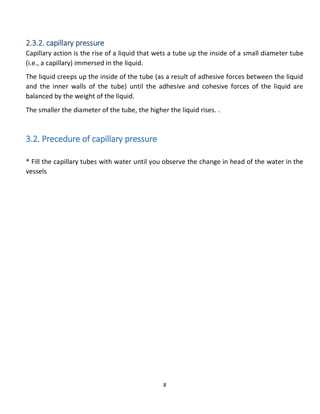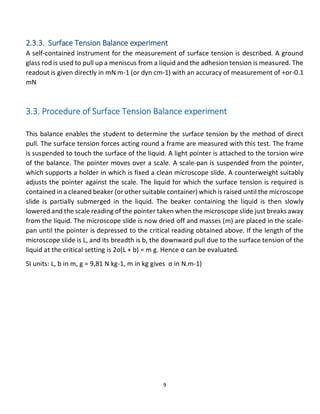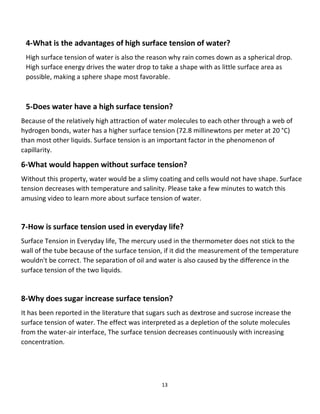The document describes experiments conducted to measure surface tension using a tapered vessel, capillary tubes, and surface tension balance. It provides background on surface tension and adhesive forces. The students measure the surface tension of liquids and discuss potential sources of error between measured and theoretical surface tension values, such as temperature fluctuations and human error in reading instruments.
